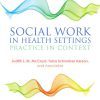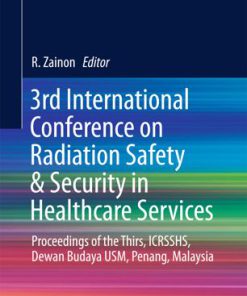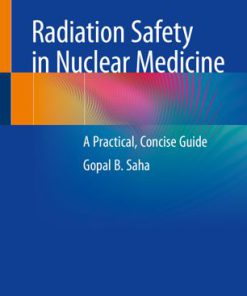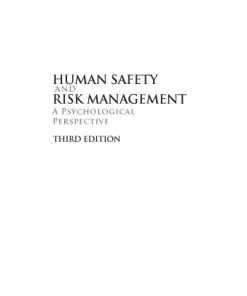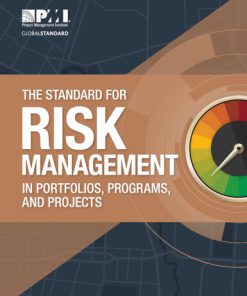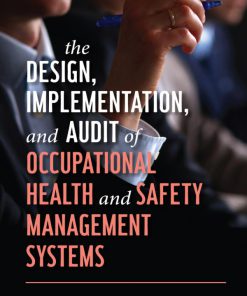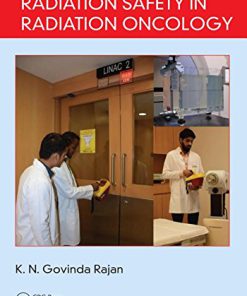Radiation Safety Management and Programs 1st Edition by Haydee Domenech 3319426716 9783319426716
$50.00 Original price was: $50.00.$25.00Current price is: $25.00.
Radiation Safety: Management and Programs 1st Edition by Haydee Domenech – Ebook PDF Instant Download/DeliveryISBN: 3319426716, 9783319426716
Full download Radiation Safety: Management and Programs 1st Edition after payment.
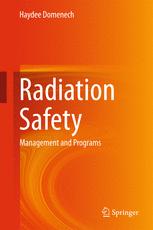
Product details:
ISBN-10 : 3319426716
ISBN-13 : 9783319426716
Author: Haydee Domenech
This book discusses important fundamentals of radiation safety with specific details on dose units, calculations, measuring, and biological effects of ionizing radiation. The author covers different exposure situations and their requirements, and relevant legislation and regulations governing radiation safety. The book also examines radioactive waste management, the transport of radioactive materials, emergency planning and preparedness and various examples of radiation protection programs for industrial, medical, and academic applications.
Radiation Safety: Management and Programs 1st Table of contents:
1 What Does Ionizing Radiation Mean?
Further Reading
2 Biological Effects of Ionizing Radiation
2.1 Classification of Biological Effects
2.2 Radiation Effects During Prenatal Development
2.3 Biological Indicators of Radiation Damage
References
3 Radiation Sources: Benefits and Risks
3.1 Radiation Sources in Medicine
3.2 Radiation Sources in Industry and Agriculture
3.3 Radiation Sources in Research and Education
3.4 Risks and Its Perception
References
4 Basic Quantities and Units in Radiation Safety
4.1 Source Quantities
4.2 Interaction Coefficients and Related Quantities
4.3 Dosimetric Quantities
4.4 Special Quantities
4.5 Operational Quantities
References
5 Measuring Instruments and Methods
5.1 Common Counting Methods for Monitoring
5.1.1 Gas Detectors
5.1.2 Scintillation Detectors
5.1.3 Solid-State Detectors
5.1.4 Other Detectors
5.1.5 Selection Criteria
5.2 Individual Monitoring and Personal Dosimetry
5.2.1 Film Badge Dosimetry
5.2.2 Luminescence Dosimetry
5.2.3 Other Personal Dosimeters
5.2.4 Chemical Dosimetry
5.2.5 Internal Dosimetry
References
6 Dose Assessment
6.1 Dose from an External Point Gamma Source
6.2 Dose from External Beta Sources
6.3 Dose from Neutrons
6.4 Dose from X-Rays
6.5 Dose Due to Intake of Radionuclides
References
7 Shielding
7.1 Shielding of Photons
7.1.1 Point Source Shielding
7.1.2 Extended Source Shielding
7.1.3 Shielding Against Scattered Radiation
7.1.4 Commercial Software
7.2 X-Ray Shielding
7.3 Shielding from Beta Radiation
7.4 Neutron Shielding
References
8 Exposure Situations
8.1 Types of Exposure Situation
8.2 Dose Constraints and Reference Levels
8.3 Types of Assessment
8.4 Exposure Categories
References
9 Regulations and Regulatory Control
9.1 Legal and Regulatory Framework
9.2 Regulatory Control
9.3 Purpose and Scope of Specific Regulations
9.4 Examples of Regulatory Control in United States
References
10 The Management System for Safety
10.1 Interested Parties to the System
10.1.1 The Regulatory Authority
10.1.2 Responsibility and Authority
10.2 Notification and Authorization
10.2.1 Notification
10.2.2 Authorization
10.2.3 Licensing in the United States
10.2.4 Authorization Process
10.3 Technical and Verification Requirements for Safety
10.3.1 Requirements for the Security of Sources
10.3.2 Defense in Depth
10.3.3 Good Engineering Practices
10.3.4 Monitoring and Verification of Compliance
10.3.5 Safety Assessment
References
11 General Principles of Radiation Protection
11.1 Justification
11.2 Optimization
11.2.1 Analytical Tree
11.2.2 Cost-Effectiveness Analysis
11.2.3 Cost–Benefit Analysis
11.2.4 Multiattribute Utility Analysis
11.2.5 Multi-Criteria Outranking Analysis
11.3 Application of Dose Limits
References
12 Occupational Radiation Protection
12.1 Occupationally Exposed Individuals
12.2 Objectives
12.3 Radiation Safety Officer (RSO)
12.4 Radiation Protection Program
12.5 Classification of Areas
12.5.1 Controlled Areas
12.5.2 Supervised Areas
12.6 Procedures and Record Keeping
12.7 Monitoring Programs
12.7.1 Individual Monitoring and Exposure Assessment
12.7.2 Workplace Monitoring
12.8 Calibration
12.9 Personnel Education, Qualification, and Training
12.10 Conditions of Service
12.11 Quality Assurance
12.12 Medical Surveillance
References
13 Public Radiation Protection
13.1 Natural Sources of Radiation
13.2 Man-Made Radiation Sources
13.3 Public Exposure Control
References
14 Radioactive Waste Management
14.1 Clearance Levels
14.2 Radioactive Waste Management
14.3 Classification of Radioactive Waste
14.4 Pretreatment Procedures
14.5 Treatment Processes
14.6 Waste Conditioning
14.6.1 Immobilization Processes
14.6.2 Packaging
14.7 Storage and Disposal
14.8 Management and Disposal of Disused Sealed Sources
14.9 Conditioning of Spent Sealed Sources
References
15 Transport of Radioactive Materials
15.1 Classification of Material and Packages
15.2 Testing Requirements
15.3 Limits and Categories
15.4 Marking, Labeling and Placarding
References
16 Emergency Exposure Situations
16.1 Potential Exposure
16.2 The Analysis of Potential Exposures
16.3 Accidents and Consequences
16.4 The International Nuclear and Radiological Event Scale (INES)
16.5 Emergency Planning and Preparedness
16.6 National Response Framework
16.7 EPA Protective Action Guides
16.8 Emergency Training
References
17 Radiation Protection Program Details
17.1 Irradiation Facilities
17.2 Industrial Radiography
17.3 Nuclear Gauges
17.4 Well Logging
17.5 Custom and Border Inspection
17.6 Unsealed Sources
17.7 Radiation Protection Program Development Checklist
People also search for Radiation Safety: Management and Programs 1st:
radiation safety management and programs
radiation safety programs
radiation safety training courses
radiation safety training requirements
radiation safety jobs
Tags: Radiation Safety, Management, Programs, Haydee Domenech
You may also like…
Medicine - Radiology
Radiation Safety in Nuclear Medicine A Practical Concise Guide Gopal B. Saha
Technique - Transport
Business & Economics - Management & Leadership
Medicine - Radiology
Radiation Safety in Radiation Oncology First Edition K. N. Govinda Rajan



